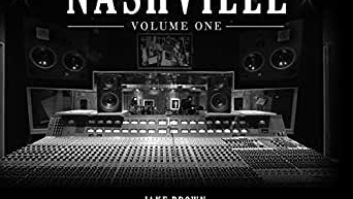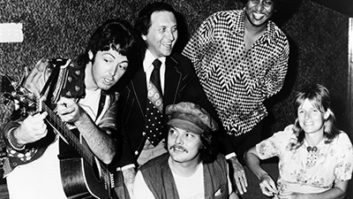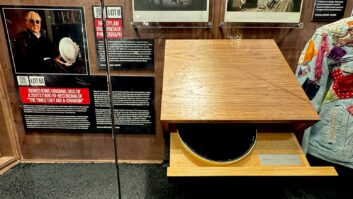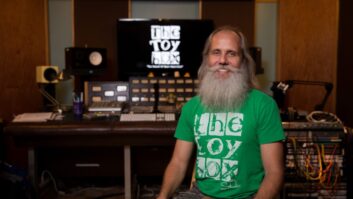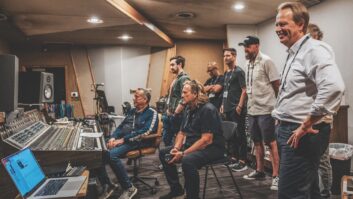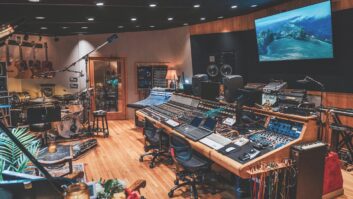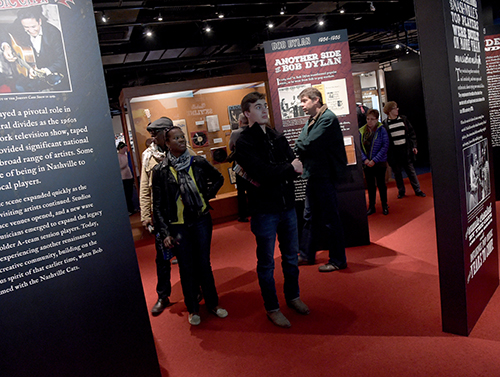
When Bob Dylan brought some of his Blonde on Blonde sessions to Columbia Studios, Nashville, he spearheaded a pro-Nashville movement among non-country artists. For nearly a decade after his first visit, Music City saw a steady stream of high-profile artists, including Neil Young, Joan Baez, Linda Ronstadt, Simon & Garfunkel and others, who also wanted to work with Nashville’s top-notch session musicians.
Also fueling this trend was the short-lived but influential Johnny Cash Show TV program (1969-1970). Cash’s series was filmed at the legendary Ryman Auditorium, and the Man in Black’s relationships with singer/songwriters in diverse genres lured artists from James Taylor to Eric Clapton to Nashville. Dylan and Joni Mitchell were Cash’s first TV guests.
Beginning this past March, the Country Music Hall of Fame and Museum is paying tribute with the exhibit “Dylan, Cash, and the Nashville Cats: A New Music City,” featuring historical photos, artifacts and music.
Session greats who are featured in the CMHOF exhibit include guitarist Fred Carter Jr., steel guitarist Grady Martin, harmonica player Charlie McCoy, pianist Hargus “Pig” Robbins, and fiddler Buddy Spicher. “Nashville Cats” also points to game changers such as pianist/producer David Briggs and bassist/producer Norbert Putnam, who co-founded Quadrafonic Sound, where Young recorded Harvest and Dobie Gray cut his crossover smash “Drift Away.” And these are just a few examples.
The timeline of the exhibit tops out in 1974, depicting Paul and Linda McCartney’s legendary six-week stint in Nashville. In July of that year, the McCartneys brought their family and Wings (drummer Geoff Britton, rhythm guitarist/vocalist Denny Laine and lead guitarist Jimmy McCulloch) to town for rehearsals at Curly “Junior” Putman’s farm in Lebanon, Tenn., where the McCartneys were staying. But as we now know, their visit yielded several recordings.

“Their accommodations had been arranged through Buddy Killen, president of Tree Publishing at that time,” recalls Ernie Winfrey, the engineer who recorded McCartney’s Nashville sides. “Buddy acted as host and guide for them, and being the businessman he was, he made sure they knew he had a recording studio [Sound Shop]. While I was doing vocal overdubs one evening with one of Buddy’s artists, Paul and Linda walked in unannounced. I was quite nervous and had no idea what to expect, but between takes, they chatted with Buddy and myself and I quickly felt at ease. They said they felt very comfortable in the studio and made arrangements with Buddy to block out the next two weeks.”
Winfrey had been on staff at Sound Shop—then equipped with an MCI JH24 console, and Scully, Ampex and Studer tape machines—since the studio’s inception in ’71, and had seen a huge variety of artists come through, thanks to Killen’s far-ranging connections and tastes. “We recorded Millie Jackson, who was a big R&B artist at that time, and of course from 1972 on we did all of Joe Tex’s music,” he says.
Winfrey worked on seven songs with Paul McCartney and Wings. A few tracks had been started elsewhere but were brought to Sound Shop for the band to play with and add parts (“Hey Diddle,” “Bridge on the River Suite,” “Wide Prairie”). But others started in Sound Shop: “Eloise,” which was tracked with Chet Atkins on guitar and Floyd Cramer on piano; “Junior’s Farm,” the tribute to the McCartney’s Nashville host; and “Sally G.”
“’Sally G. is featured on the Country Music Hall of Fame’s compilation CD from the artists in the exhibit,” Winfrey says. “It was supposedly inspired by Paul’s trip to Printer’s Alley with Buddy. All of Wings played on this one, except Linda, who did feature very prominently on the harmonies. Buddy got fiddler Johnny Gimble and steel player Lloyd Green for this song.”
Winfrey loaned several mementos from his McCartney sessions to the CMHOF. Displayed in the exhibit are several of his personal photos (including the one above), a postcard that the McCartneys sent him from England, and a record jacket from “Walking in the Park with Eloise.”
“It’s funny, even today, every time I’m introduced to someone, it’s appended with ‘The Guy Who Recorded Paul McCartney,’ and I guess that will be my major claim to fame forever. But I don’t object to that. If that’s the way I’ll be recognized, that’s fine with me.”
